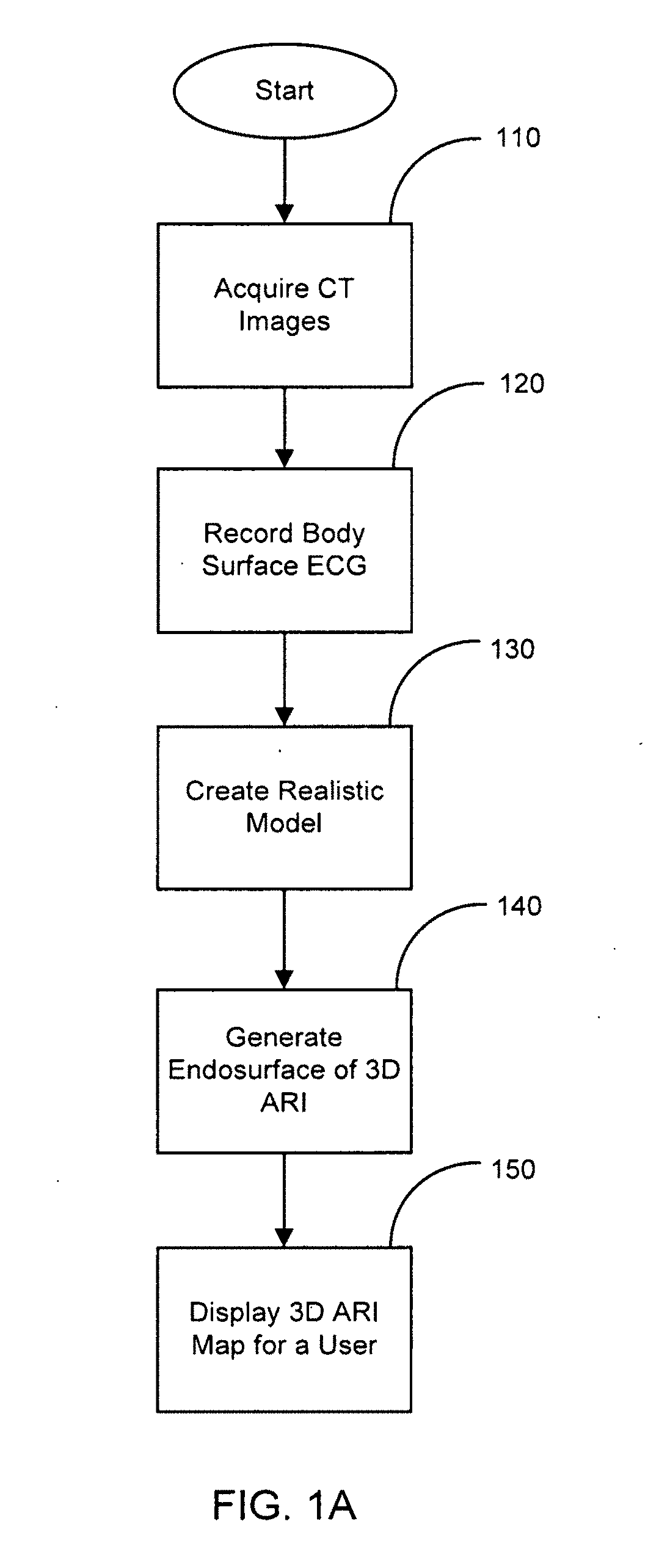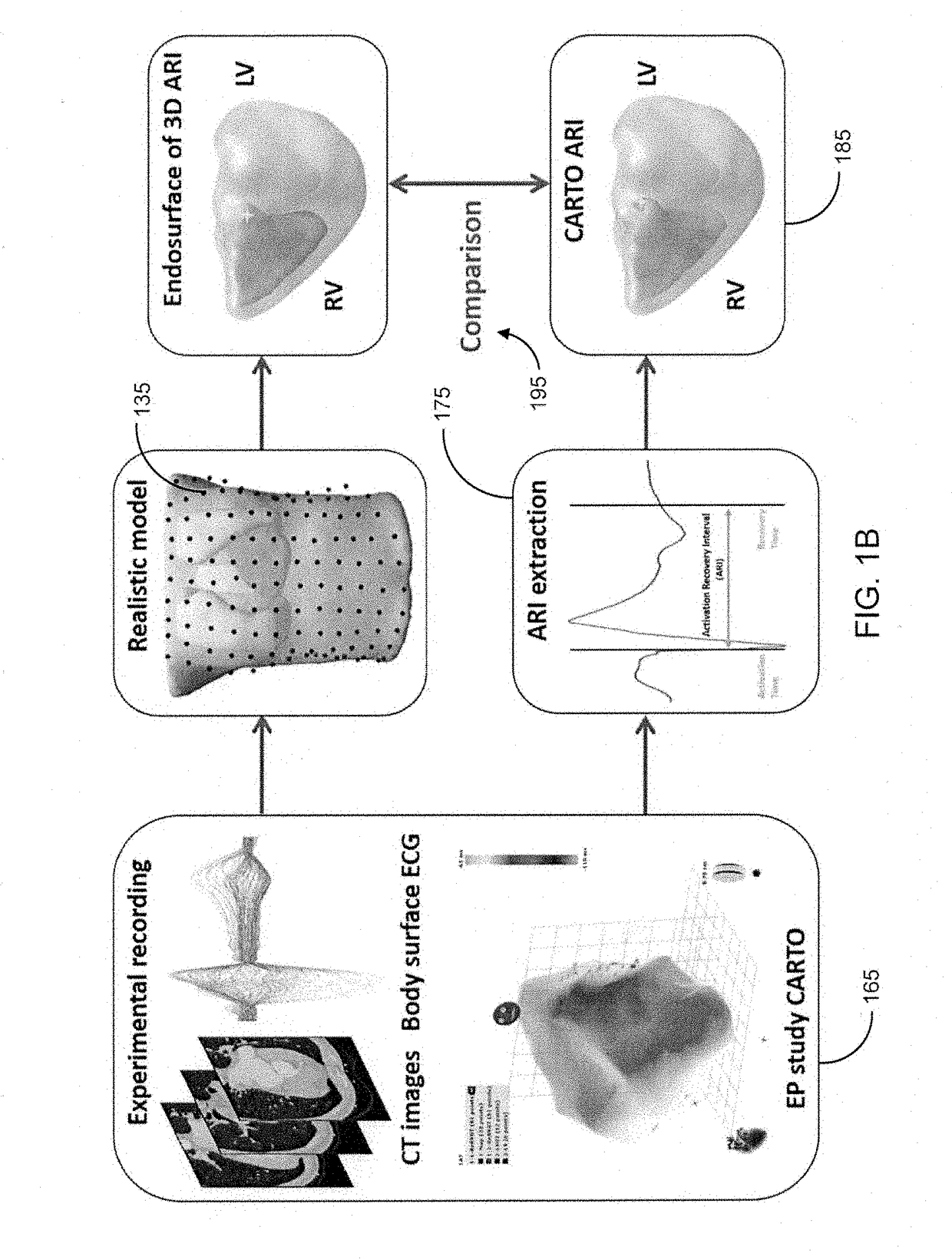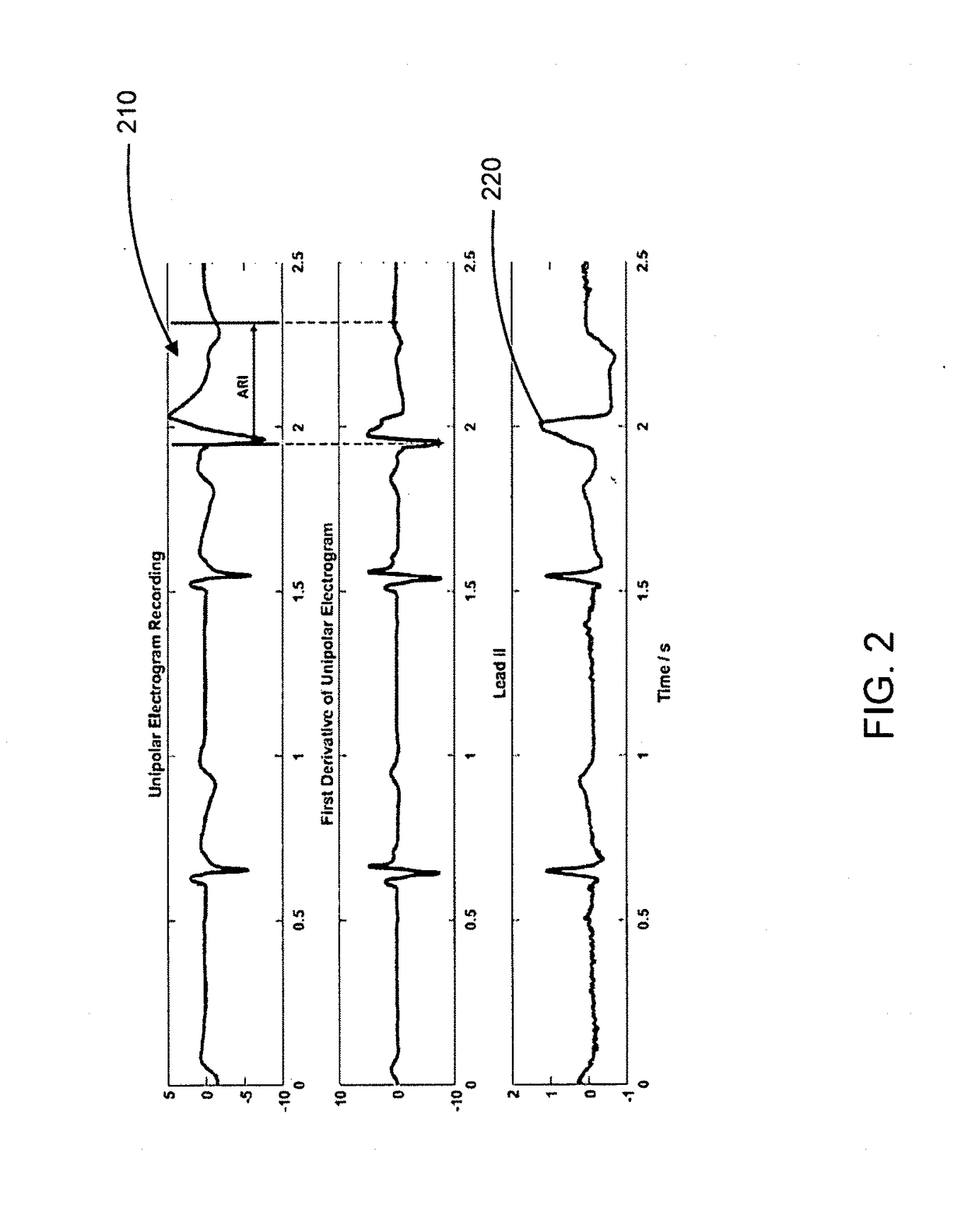System and method for activation recovery interval imaging of cardiac disorders
a recovery interval and activation recovery technology, applied in the field of activation recovery interval imaging of cardiac disorders, can solve the problems of insufficient indices derived from 12-lead ecg, inability to identify high-resolution body surface potential maps (bspm), and unclear theoretical rationale of this alternative method, etc., to achieve good estimation of action potential duration and high correlation
- Summary
- Abstract
- Description
- Claims
- Application Information
AI Technical Summary
Benefits of technology
Problems solved by technology
Method used
Image
Examples
Embodiment Construction
[0022]Three-dimensional ARI imaging may be used to determine the spatial pattern of cardiac activation and recovery with the ability to reconstruct ARI maps noninvasively. This may be used for patients suffering from premature ventricular contraction (PVC), for example. Quantitative comparisons may be made between imaging results and clinical recordings. Previously, ventricular recovery patterns could only be reflected from epicardial potentials noninvasively or from endocardial potentials invasively. Although the activation pattern may remain unchanged, recovery could vary and thus plays an important role in the susceptibility to cardiac arrhythmias. Given the inhomogeneous and dynamic nature of the recovery pattern, a 3D ARI imaging can provide important information guiding determination of the underlying arrhythmogenesis. Additionally, 3D ARI imaging has the advantage of being able to be extracted from multiple, simultaneously recorded electrograms and reflects the dynamics and s...
PUM
 Login to View More
Login to View More Abstract
Description
Claims
Application Information
 Login to View More
Login to View More - R&D
- Intellectual Property
- Life Sciences
- Materials
- Tech Scout
- Unparalleled Data Quality
- Higher Quality Content
- 60% Fewer Hallucinations
Browse by: Latest US Patents, China's latest patents, Technical Efficacy Thesaurus, Application Domain, Technology Topic, Popular Technical Reports.
© 2025 PatSnap. All rights reserved.Legal|Privacy policy|Modern Slavery Act Transparency Statement|Sitemap|About US| Contact US: help@patsnap.com



